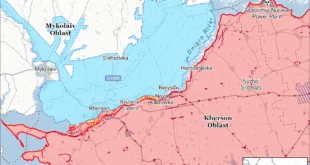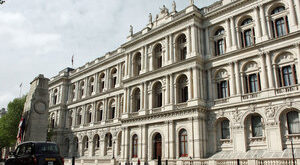The resolution empowers member states to make collective recommendations, but it is legally nonbinding.
The US veto on Friday against a proposed UN Security Council (UNSC) resolution calling for an immediate ceasefire in Gaza has triggered conversation and a call to action to use a rare United Nations resolution in efforts to stop Israel’s brutal war on Gaza.
Egypt and Mauritania on Monday invoked Resolution 377A (V) to call for an emergency meeting of the UN General Assembly (UNGA) on Tuesday. The resolution says that if the UNSC is not able to discharge its primary responsibility of maintaining global peace due to lack of unanimity, the UNGA can step in.
But it comes with riders, and the UNGA recommendations are legally nonbinding, which means its proposals can be ignored without any consequences. Israel has ignored several binding UN resolutions in the past, thanks mainly to the diplomatic backing of Washington.
So, what’s the resolution, what’s its history, and can it be used to get around the US veto to stop the devastating war that has killed more than 18,000 Palestinians since October 7?
What’s the resolution?
Section A of Resolution 377A (V), also known as “Uniting for Peace”, is aimed at resolving a situation in which the UN “fails to exercise its primary responsibility for the maintenance of international peace and security” because Security Council members can’t see eye to eye.
It empowers the General Assembly, firstly, to convene a meeting through the secretary-general. The assembly is meant to make recommendations to members for collective measures, including “the use of armed force when necessary”.
At least one member of the UN Security Council or a group of General Assembly members will need to be in favour of convening the resolution for it to come into effect.
What brought up this idea?
The idea to envision additional powers for the secretary-general to potentially break a deadlock was adopted as a result of the Korean War in 1950, which saw North Korea invade its southern neighbour after years of hostilities between the two countries.
At the time, the former Soviet Union was blocking any determination by the Security Council to stop the war, prompting the 377 (V) resolution to be passed on November 3, 1950.
This came after the US managed to secure backing for the idea that the General Assembly needed to be empowered to enhance its capabilities in protecting global security.
Where has it been used before?
The resolution is not widely used, but it has been known to be employed several times over decades to help resolve a variety of conflicts, including the Congo Crisis in 1960, the conflict between India and Pakistan in 1971 and the Soviet occupation of Afghanistan in 1980.
A crucial element of the resolution is that it affirms the General Assembly may, if deemed appropriate, recommend the use of force.
In that sense, the resolution has been implemented only once – in the Korean crisis.
Resolution 377A was used to convene an emergency session of the General Assembly in 1951 due to lack of consensus among the UNSC members. It led to the passing of UN Resolution 498 (V), which said that China had militarily engaged in the Korean War.
It was the first time the UN treated a nation as an aggressor amid a war. The resolution did not explicitly refer to the Uniting for Peace resolution, but it exactly copied its text in saying the UNSC had failed to carry out its global responsibility effectively due to discord among members.
It “called upon all States and authorities to continue to lend every assistance to the United Nations’ action in Korea”, which meant military assistance. It did not, however, lead to the deployment of force by the UN, which had called for ceasing hostilities.
This Uniting for Peace function is different from the organisation’s peacekeeping function, or the UN Emergency Force (UNEF), the first of which was established in 1956 to monitor the front line between Israel and Egypt. The UNEF did not have a combat function and was meant to neutralise conflicts solely through the presence of its force.
UN peacekeeping forces are now active in a dozen countries, including Lebanon, where they monitor the cessation of hostilities with Israel and ensure humanitarian assistance to civilians after several conflicts.
Can it be used to stop the war in Gaza?
UN Secretary-General Antonio Guterres could potentially be empowered to convene an emergency session of the General Assembly within 24 hours if there is a call by at least one member of the Security Council or a group of General Assembly members.
Member states could then make recommendations for collective action, which could mean resorting to more extreme options if agreed upon, including military action.
But all resolutions and decisions of the General Assembly are just that – recommendations. This means that, unlike some Security Council decisions, these resolutions are not legally binding.
Regardless, there has been growing discussion, and calls online, for the UN to use this power.
They only gathered pace after Guterres decided on Wednesday to invoke Article 99 of the UN Charter to formally warn the Security Council that Israel’s war on Gaza is now a global threat.
Speaking at the Doha Forum on Sunday, the UN chief said that he will not give up appealing for a humanitarian ceasefire in Gaza despite Friday’s veto.
“I urged the Security Council to press to avert a humanitarian catastrophe, and I reiterated my appeal for a humanitarian ceasefire to be declared. Regrettably, the Security Council failed to do it, but that does not make it less necessary,” he said.
Why does the US keep vetoing ceasefires?
Washington has consistently vetoed any Security Council resolutions that have demanded an immediate ceasefire and bringing in more significant amounts of humanitarian aid to besieged Palestinians.
The latest came on Friday when the 13 remaining of the 15 current members of the UNSC voted in favour of a resolution cosponsored by 100 other countries. The United Kingdom abstained.
It led to yet another deadlock in efforts to stop Israel’s ground and air assaults that have killed nearly 18,000 Palestinians since the October 7 Hamas attack that killed over 1,100 people in Israel. Hamas also took more than 200 captives, dozens of whom have been released as part of the truce deal that also saw hundreds of Palestinians freed from Israeli prisons.
Amid the mounting criticism, and persisting demonstrations around the globe, Washington has maintained that it is against an immediate ceasefire because it would allow Hamas to recover and continue to pose a security threat to Israel.
Hamas and other Palestinian resistance groups have waged an armed rebellion against decades of Israeli occupation and blockade. Israel has also been accused of implementing measures such as building settlements on Palestinian lands that hamper the realisation of a future Palestinian state.
The US believes its own political interventions would be more effective in trying to ensure that Israel avoids civilian deaths while doing its best to secure the release of captives held in Gaza and making strides towards a Western-backed goal of “destroying” Hamas.
But Israel does not seem to have paid heed to the US advice on the protection of Palestinian civilians, with more than 80 percent of causalities being civilians.
 Eurasia Press & News
Eurasia Press & News




